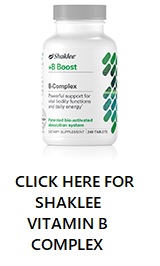Supplements
Best Multivitamin
Shaklee Vitmins Review
Antioxidants
Daily Multivitamin
Fat And Water Soluble Vitamins
Good Daily Multivitamin
Senior Vitamin Needs
Vitamins and the Body
Minerals
Vitamina y Nuestro Cuerpo
Revitol Skin Care Products
Sitemap
|
Vitamin B3 (Niacin)
 Another important member of the unbelievably valuable B-complex family, Vitamin B3, also known as Niacin, facilitates the processes involved with metabolizing fats, proteins and carbohydrates. In addition, over 50 enzymes are able to function properly because of this one vitamin. Niacin is one of the more stable vitamins, and, as such, it is able to resist oxidation, heat and alkalies. Another important member of the unbelievably valuable B-complex family, Vitamin B3, also known as Niacin, facilitates the processes involved with metabolizing fats, proteins and carbohydrates. In addition, over 50 enzymes are able to function properly because of this one vitamin. Niacin is one of the more stable vitamins, and, as such, it is able to resist oxidation, heat and alkalies.
Niacin also has an interesting and important effect on the arteries.
First, this vitamin helps your arteries dilate (widen). This helps blood circulate more easily throughout the entire body. Because Niacin also lowers the body's LDL or, bad cholesterol, levels, it helps the body prevent plaque from forming in, and building up, on artery walls. The result is improved blood flow, and, even better, a reduced risk of heart attack and other heart disease issues.
By the way, if you want to see Niacin in action, take a Niacin pill. Within a few moments, your face and other body parts will turn red.
Seriously, however, Vitamin B3 also has a major role in keeping the body's nervous system, digestive tract, and overall mental well-being functioning properly. A regular supply of Vitamin B3 is also required for healthy skin. Not least, vitamin B3 is also required for the body to produce various hormones including progesterone and testosterone.
Like the other B vitamins, Vitamin B3 is water
soluble, meaning that it's easily absorbed in water and needs to be constantly resupplied. While the body does have the ability to produce a very small quantity
of Niacin, this amount is not enough to meet daily intake requirements. For men, daily requirements are about 16 mg per day and
for women about 14 mg per day. The rest must be supplied either by food or by supplementation.
Sources of Vitamin B3
In nature, Niacin is found in more animal products than plant products. Good sources of this vitamin include organ meats (kidney, liver), lean meats, pork, prawns, and even milk from cows.
Some of the other sources include seeds and almonds, rice bran, wheat products, beans, green vegetables, turnips, carrots, and celery. Yeast and bran can be good sources if the bran coating is not removed (as it is during the milling process).
For more information on how to get a good supply of Vitamin B3 from foods, take a look at this discussion on Superfoods Rejuvenate Mind, Body, and Spirit.
The recommended daily intake of Vitamin B3 (Niacin) is about 14 - 15 mg for adult women. Women who are pregnant or who are breastfeeding need slightly
more. The required daily intake for men is 15 - 19 mg. Note that some individuals who digest Niacin can experience a rapid reddening of the
skin. If this happens, slow your intake down a and allow the body to get used to Niacin.
Symptoms of a Vitamin B3 Deficiency
Even a mild Vitamin B3 deficiency will cause symptoms. These could include: an overall feeling of tiredness, forgetfulness, nausea and/or
vomiting, loss of appetite, skin outbursts or lesions, sores in the mouth, headache, anemia, problems in the digestive system, and trouble
sleeping or relaxing.
When the deficiency is severe, a disease called Pellagra
can develop. The first symptom of this disease is easily recognizable. A lesion
appears on skin that has been exposed to sunlight. This more serious condition must be
treated immediately. Pellagra is also characterized by symptoms
including dermatitis, irritability, diarrhea or other gastrointestinal
trouble, inflammation of the mucous membranes and problems of the
nervous system such as depression and other forms of mental
disturbances. Because of its ability to keep Pellagra from developing,
this important vitamin is sometimes referred to as Vitamin PP (Pellagra Prevention).
Why Diets Don't Work | Sitemap
Vitamin B3 (Niacin) - Copyright 2024 by Donovan Baldwin
Page Updated November 5, 2024
|


